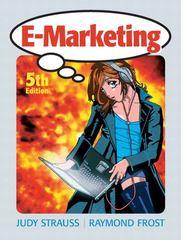



Consider a closed economy to which the Keynesian-cross analysis applies. Consumption is given by the equation C = 100 + 0.6*(Y - T). Planned investment is 300, as are government spending and taxes. a. If current output is 1,400, what is planned consumption? What is planned expenditure?
b. What is inventory accumulation (i.e., unexpected increase in inventory) or decumulation (i.e., unexpected decrease in inventory)? Should equilibrium output be higher or lower than 1,400?
c. What is equilibrium output? What is equilibrium consumption?
d. Draw a Keynesian-cross model. Label the output level of 1,400 and the equilibrium output level, and the corresponding levels of planned expenditure.
e. What is government spending multiplier?
f. How much does equilibrium income decrease when government spending decreases from 300 to 100?
g. Suppose the natural rate of output is 1,600. By what percentage is the equilibrium output above or below the natural rate of output? According to the Okun's law, how much is cyclical unemployment?
h. Should the government increase or decrease government spending to reach the natural rate of output? By how much?
i. Should the government raise or cut taxes to reach the natural rate of output?
Part B.
6. Consider a monopolist which faces an inverse demand curve p(y) = 12-y. The cost function of the monopoly is given by c(y) = y?. (a) What is the monopolist's profit maximizing level of output yM? (b) What price arises when the monopolist chooses quantity yo? (c) Draw a graph of the monopolist's Marginal Cost and Marginal Revenue functions, along with the demand curve. (d) Suppose the government decides to put a tax on this monopolist so that for each unit it sells it has to pay the government $2. What will be the monopolist's output?Problem 1. (7 points) A monopolist faces the following average revenue (demand) curve: P = 300 0.3Q and the monopolist's cost function is given by 0022) = 8000 + 03. (a) Derive the monopolist's marginal revenue equation. (2 pts) (b) Derive the mon0polist's marginal cost equation. (1 pt) (c) What level of output will the monopolist choose in order to maximize its prots? (2 pts) ((1) What price will the monopolist receive at the prot-maximizing level of output? (1 pt) (e) Calculate the monopolist's prot when they produce at the prot-maximizing level. (1 pt) Question 4 (15 marks). Suppose a monopolist producer faces an inverse demand curve expressed as: P - 12000 - 20 and a total cost curve: TC(Q) = 2000Q + 4000. (a) Derive the monopolist's marginal revenue curve. (3 marks) (b) Derive the monopolist's marginal cost curve. (2 marks) (c) What is the monopolist's profit-maximizing level output? (3 marks) (d) What price should the monopolist charge to maximize profit? (3 marks) (e) Show the profit maximizing decision graphically. Label the Marginal Cost, Marginal Rev- enue, and Demand Curves, as well as the profit maximizing quantity (Q') and price (P"). (4 marks)4. A monopolist faces a market demand curve given by Q = 70- p. a. If the monopolist can produce at constant average and marginal costs of AC = MC = 6, what output level will the monop- olist choose to maximize profits? What is the price at this output level? What are the monopolist's profits? b. Assume instead that the monopolist has a cost structure where total costs are described by C(Q) = 0.25Q' - 5Q+ 300. With the monopolist facing the same market demand and marginal revenue, what price-quantity combination will be cho- sen now to maximize profits? What will profits bet C. Assume now that a third cost structure explains the monopolist's position, with total costs given by C(Q) = 0.0133Q' - 5Q + 250. Again, calculate the monopolist's price-quantity combination that maximizes profits. What will profit be? Hint: Set MC = MR as usual and use the quadratic formula to solve the second-order equation for Q. d. Graph the market demand curve, the MR curve, and the three marginal cost curves from parts (a), (b), and (c). Notice that the monopolist's profit-making ability is constrained by (1) the market demand curve (along with its associated MR curve) and (2) the cost structure underlying production














